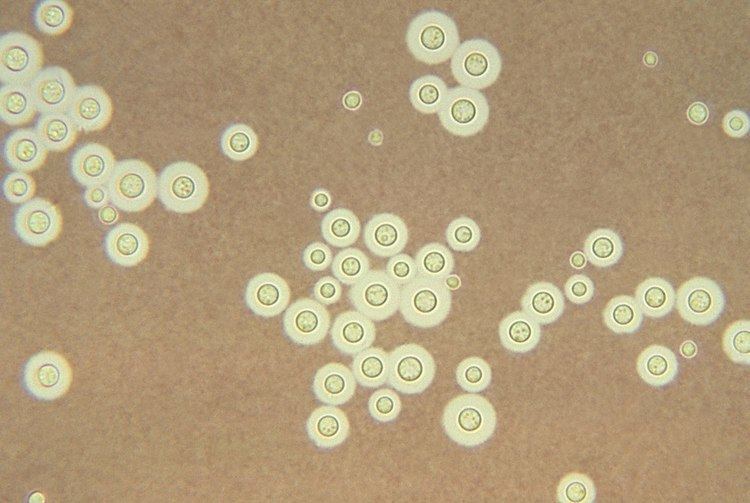Kingdom Fungi Class Tremellomycetes Family Tremellaceae | Phylum Basidiomycota Order Tremellales Rank Genus | |
 | ||
Similar Cryptococcus gattii, Tremellales, Tremellomycetes, Ajellomyces, Cryptococcus | ||
Filobasidiella fungi kingdom
Filobasidiella is a genus of fungi in the family Tremellaceae. Species are parasitic on other fungi and do not produce distinct basidiocarps (fruit bodies). The genus is the teleomorphic (sexual) state of the yeast genus Cryptococcus, some species of which are human pathogens.
Contents
History
The genus was first described in 1975 from the United States by K.J. Kwon-Chung, who obtained cultures of the type species, Filobasidiella neoformans, by crossing strains of the yeast Cryptococcus neoformans. She was able to observe basidia similar to those of the genus Filobasidium, hence the name Filobasidiella for the new genus.
Based on the shape and structure of the basidia, the genus was initially assigned to the order Filobasidiales. Cladistic analysis of DNA sequences, however, later showed that Filobasidiella belonged within the Tremellales, with the genus Kwoniella (with Tremella-like basidia) as a sister clade.
Description
Filobasidiella species are not known to produce distinct, visible fruitbodies. Microscopically, the hyphae are colourless, are clamped or unclamped, and bear haustorial cells with filaments that attach to the hyphae of the host fungus. The basidia are club-shaped and highly elongated. Spores arise in succession from four loci at the apex (which is sometimes partly septate). These spores are passively released and may remain on the basidium in chains, unless disturbed. In the type species, the spores germinate to form yeast cells, but yeast states are not known for all species.
Habitat, distribution and species
Filobasidiella neoformans and F. bacillispora are known only from laboratory cultures of their respective yeast states (Cryptococcus neoformans and Cryptococcus gattii). The presence of haustorial cells on their hyphae indicate that they are (or were) parasites of other fungi, but their original host species are unknown. Both yeasts are human pathogens, responsible for cryptococcosis, and are now cosmopolitan in distribution.
Filobasidiella depauperata (synonym F. arachnophila) is parasitic on Lecanicillium lecanii, an entomopathogenic fungus, and is known from Sri Lanka, England, the Netherlands, the Czech Republic, and Canada. It is not known to produce a yeast state. Filobasidiella lutea is parasitic on Granulobasidium vellereum, a corticioid fungus, and is known from England and Italy. It too is not known to produce a yeast state. DNA sequencing suggests all four species are congeneric. A fifth species, Filobasidiella xianghuijun, has been reported from China in association with Tremella fuciformis, but its status is uncertain.
